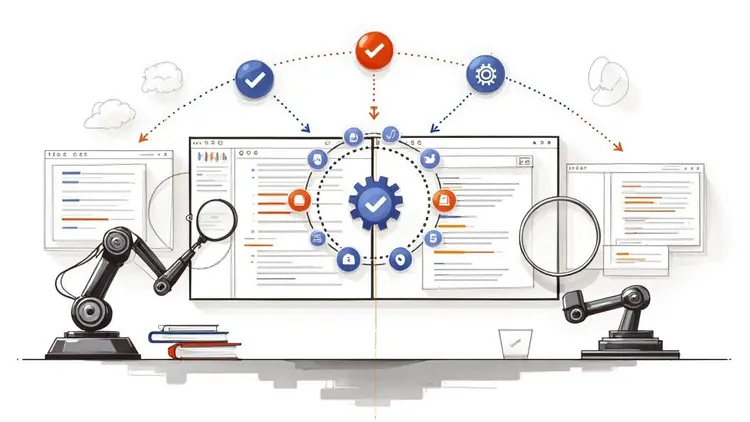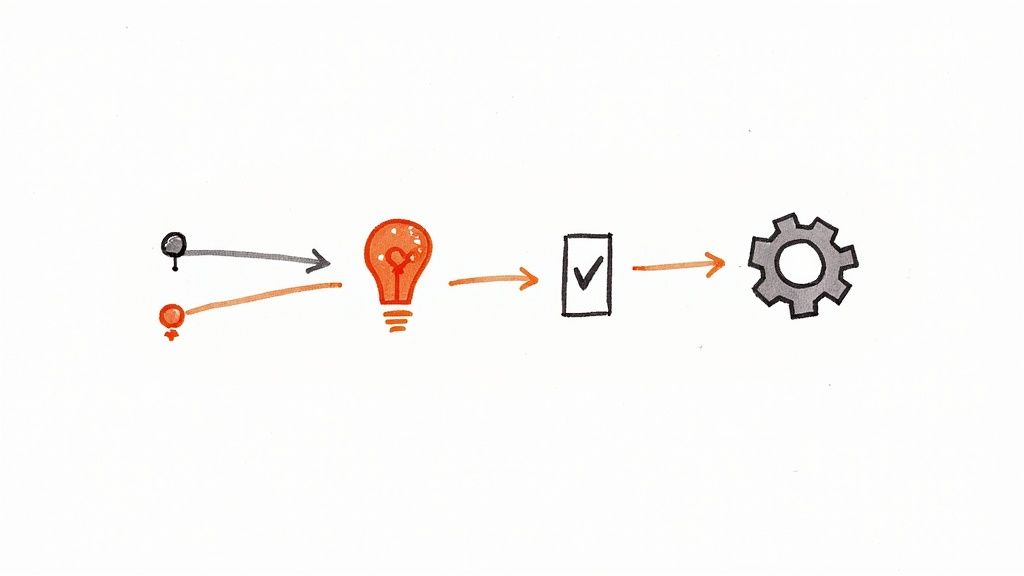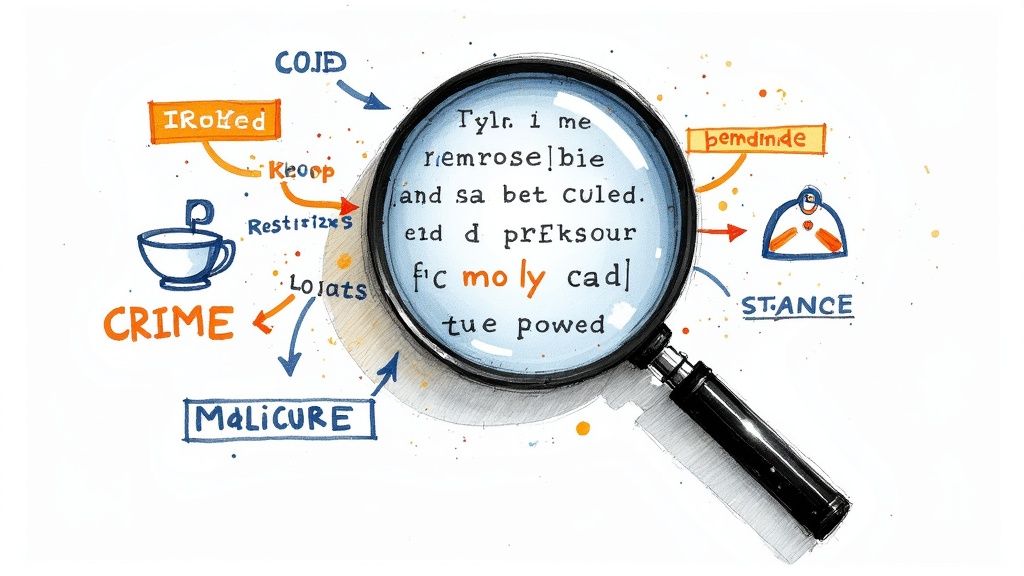2024 Automated Testing Tools Comparison: Insider's Guide to Choosing the Right Solution

Why Traditional Testing Approaches Are Falling Short

Software testing has changed dramatically in recent years. While manual testing was once enough to ensure quality, the speed and complexity of modern applications have exposed its limitations. Teams that rely solely on manual testing now struggle to keep pace with faster release cycles and growing quality demands.
The Bottleneck of Manual Testing
Manual testing still has its place, particularly for exploratory testing and user experience evaluation. However, its drawbacks become clear in day-to-day testing work. Testers get tired running the same test cases repeatedly, which leads to missed bugs. The process also takes significant time and resources, especially for large applications. As development teams adopt practices like continuous integration and frequent releases, manual testing becomes a major bottleneck.
The Rise of Automated Testing
Organizations are increasingly turning to test automation to address these challenges. Market data shows this shift clearly - the automation testing market reached $22.2 billion in 2023. This reflects the real need for faster, more reliable testing approaches. Tools like Selenium now let teams run tests continuously and consistently, which frees up manual testers to focus on more complex exploratory testing. But adopting automation comes with its own set of challenges.
Navigating the Transition to Automation
Many teams make the mistake of trying to automate all their tests at once. A better approach is to start small - identify specific, stable test cases that run frequently and automate those first. Then gradually expand automation coverage as the team builds expertise. Choosing the right automation tools is also crucial. Teams need to carefully evaluate options based on their specific needs, including programming language support, platform compatibility, and integration with tools like Jenkins.
Most successful testing strategies combine both manual and automated testing methods. For example, Mergify helps teams improve their testing process by automating code merges as part of continuous integration. This reduces manual work and lets developers focus on writing and testing code. Features like merge queues and automatic updates help development move faster while maintaining quality. The key is finding the right mix of manual and automated testing that works for your team and project needs.
Enterprise Solutions: Beyond the Marketing Hype

Moving to automated testing requires organizations to look past flashy sales pitches and evaluate tools based on real-world needs. Larger companies in particular need to assess how well a platform fits into their existing workflows and infrastructure. Let's explore what actually makes testing tools work at enterprise scale, looking at major players like IBM and Micro Focus as examples.
Key Features for Enterprise-Scale Testing
When comparing testing tools for large organizations, you need to look beyond basic automation capabilities. Here are the essential features to consider:
- Scalability and Performance: The platform must handle thousands of tests and complex integrations without breaking a sweat
- Collaboration and Reporting: Teams need clear visibility through dashboards, role-based access, and flexible reporting options
- Integration Ecosystem: The tool should work smoothly with your CI/CD pipeline and existing tools like Jenkins
- Support and Maintenance: Look for responsive support teams, clear SLAs, and ongoing training resources
But remember - having these features on paper doesn't guarantee success in practice.
Where Enterprise Platforms Shine (and Where They Fall Short)
Major platforms like IBM and Micro Focus stand out by offering comprehensive testing capabilities in one place. Their established ecosystems and deep integration options make sense for larger teams. Plus, their robust support structures provide stability for mission-critical applications.
However, these tools come with real challenges. The sheer number of features often means a steep learning curve that slows down adoption. For instance, connecting an enterprise platform to your current systems typically requires significant time and expertise. The costs add up quickly too - from licensing to implementation to ongoing maintenance. Teams need to carefully weigh the benefits against the total investment required.
Evaluating Enterprise Testing Platforms: A Practical Approach
As you compare testing tools for your organization, ask yourself:
- What are your current testing needs and how might they grow?
- Will the platform work well with your existing toolset?
- How much training and support will your team need?
- What's the true cost including licenses, setup, and maintenance?
Being honest about these questions helps determine if you really need an enterprise solution or if a more focused tool would work better. Success with automated testing isn't about picking the biggest name - it's about finding the right fit for your specific situation. Understanding the real strengths and limitations of different platforms leads to choices that deliver actual value and better testing processes. Tools like Mergify can complement enterprise testing by automating code merges, helping teams focus more on effective testing strategies rather than manual processes.
Rising Stars in Specialized Testing

Beyond the standard enterprise testing platforms, we're seeing significant growth in tools that focus on specific testing needs. Rather than trying to do everything, these specialized tools excel at one thing - whether that's API testing, mobile testing, or UI automation. More teams are moving away from all-in-one solutions and instead building their testing stack with multiple focused tools that match their exact needs.
The Power of Focus: Why Specialized Tools Excel
When a tool is built to solve one specific problem really well, it tends to offer deeper capabilities and a better user experience in that area. Take Postman for example - by focusing solely on API testing, it's become the go-to choice for many developers working with APIs. Teams can get up and running quickly with these focused tools since there's less to learn compared to larger platforms that try to do it all.
API Testing: Ensuring Seamless Integrations
APIs form the connections between modern software systems, making thorough API testing essential for quality. Tools like Postman give developers exactly what they need to create, run and manage API tests effectively, with support for different API types and protocols. By catching API issues early, teams can build more reliable software that works smoothly with other systems.
Mobile Testing: Navigating the Device Landscape
Testing mobile apps comes with unique challenges - there are countless device types, OS versions, and screen sizes to consider. Tools like Appium tackle this head-on by letting testers write one set of automated UI tests that work on both Android and iOS. Teams can test their apps across many devices without maintaining separate test suites. Built-in device simulators also make it practical and affordable to test extensively.
UI Automation: Ensuring a Seamless User Experience
When it comes to testing user interfaces, the details matter. While Selenium provides basic UI testing capabilities, specialized tools go further with features like visual regression testing and smart handling of dynamic UI elements. This helps teams catch visual bugs and ensure their app looks and works right across different scenarios. Tools like Mergify complement UI testing by automating code integration, giving developers more time to focus on building great interfaces.
Integrating Specialized Tools within Your Ecosystem
You don't have to choose between enterprise platforms and specialized tools - many teams use both together effectively. For example, you might use an enterprise solution to manage your overall testing process while adding Postman for APIs and Appium for mobile testing. Tools like Cypress can plug specific gaps, like end-to-end web testing with detailed control over the test environment. The key is picking the right mix of tools that work together to meet your testing needs while keeping things manageable for your team.
Making the Business Case for Automation

Moving to automated testing requires showing clear business value beyond just adopting new tools. The key is demonstrating how testing can shift from being seen as a cost burden to becoming a true driver of business success. This means building a solid case around return on investment and getting key decision-makers on board.
Quantifying the ROI of Test Automation
The numbers tell a compelling story about automation's impact. Recent data shows that about 25% of companies see immediate returns after implementing automated testing, while another 24% achieve ROI within six months. An additional 28% see returns within their first year. These quick wins have helped fuel major growth in the testing automation market, which hit $22.2 billion in 2023 and is expected to reach $90.5 billion by 2032. Companies are investing because they're seeing real results.
Measuring and Communicating the Value
Building the business case means looking beyond just dollars saved. For instance, when manual testers spend less time on repetitive checks, you can calculate direct cost savings based on hourly rates and time recovered. But the benefits go further - fewer bugs make it to production, reducing expensive fixes and support calls while protecting your reputation. Getting features to market faster through automated testing also helps you stay ahead of competitors and deliver more value to customers.
Balancing Automation and Manual Testing
While automation brings clear advantages, finding the right mix with manual testing is crucial. Currently, just 5% of companies run fully automated tests, as most use a combined approach. Manual testing remains vital for exploring new features, checking usability, and handling situations that need human judgment. The sweet spot is using automation for repetitive work while letting skilled testers focus on complex quality checks. Tools like Mergify help by automating parts of development workflows, giving teams more time for strategic testing that machines can't handle.
Strategies for Securing Stakeholder Buy-in
Getting stakeholders on board starts with painting a clear picture of current testing challenges, like how manual processes create bottlenecks that slow down releases. Then show how automation addresses these pain points using real examples from your organization. Focus on specific improvements to quality, speed-to-market, and bottom-line impact. Position automation as an investment in future success rather than just another expense. And make sure to address common concerns upfront, like training needs, by outlining exactly how you'll support the transition.
Building a Future-Proof Testing Strategy
Creating an effective testing strategy requires smart, deliberate choices rather than chasing trends. While AI test generation and cloud testing environments offer exciting possibilities, success comes from carefully evaluating and integrating new approaches alongside proven methods that support long-term goals.
The Promise and Pitfalls of Emerging Technologies
AI brings new capabilities to testing, but with important limitations. Current AI tools excel at supporting tasks like generating test data and flagging potential issues - making testers more effective rather than replacing them. This allows teams to focus on strategic work while AI handles repetitive tasks. Similarly, cloud-based testing enables running tests across many devices and browsers, but requires careful planning around resource management and security. The key is understanding both the benefits and constraints of these technologies.
Preparing Your Team for the Future of Testing
As AI and cloud testing become more prevalent, testing teams need expanded skillsets. While manual testing expertise remains essential, testers now need knowledge of automation, data analysis, and cloud infrastructure. Supporting this evolution means providing training opportunities, encouraging ongoing learning, and sometimes bringing in specialists. For example, teams need to understand how to effectively use AI-assisted test generation and manage cloud testing environments securely.
Practical Steps for Integrating New Capabilities
The best way to adopt new testing approaches is through small, focused experiments. Start by identifying specific areas where AI or cloud testing could provide clear benefits. You might try AI-powered test data generation for one project, or move a subset of tests to cloud execution. Tools like Mergify can help smooth this process - by automating code merges and updates, it gives teams more time to explore and implement new testing methods effectively.
Automated Testing Tools Comparison: A Forward-Looking Perspective
When evaluating testing tools, consider their ability to work with newer technologies like AI features and cloud platforms. With the automation testing market expected to reach $90.5 billion by 2032, choosing tools that can adapt to change is crucial. Focus on solutions that solve today's needs while remaining flexible enough to incorporate future advances. This balanced approach helps build a testing strategy that stays effective over time through careful tool selection and incremental improvements.
Your Testing Tool Selection Framework
Success in test automation starts with choosing the right tools for your needs. Every team has different testing goals and constraints, so there's no perfect tool choice for everyone. Here's how to pick automated testing tools that actually serve your team well.
Defining Your Testing Needs
The first step is understanding exactly what your team needs from testing tools. Ask yourself: What testing do we do most often - UI tests, API tests, performance checks? What programming skills does the team have? What's our budget for tools? Having clear answers focuses your evaluation. For example, web UI testing teams need different capabilities than mobile performance testing teams.
Key Evaluation Criteria
After clarifying your needs, decide how you'll assess tools. Here are the main factors to consider:
- Ease of Use: Can your team pick up the tool quickly? Does it need coding expertise, or can testers with less technical skills still use it? This affects how fast your team can start running tests effectively.
- Supported Technologies: Does it work with the tech stack you use? If you build with React, make sure the tool handles React apps smoothly.
- Integration Capabilities: Will it connect easily to your development tools, especially your CI/CD pipeline and Jenkins? Good integration helps testing fit into your workflow.
- Reporting and Analytics: Are test results clear and useful? Can you track progress and spot problems? Good reporting helps you improve quality over time.
- Cost and Scalability: Beyond license fees, what's the total cost including maintenance and training? Will it grow with your testing needs?
Building Your Testing Toolkit
Most teams need multiple testing tools rather than just one. You might use Postman for API tests alongside Cypress for end-to-end web testing. Adding Mergify to manage code merges lets your team focus more on testing instead of manual updates. Mergify reduces merge errors and speeds up delivery by automating repetitive tasks.
The goal isn't finding a perfect tool - it's finding tools that fit your specific needs. Start small by trying a few options and getting team feedback. This helps you invest in tools that actually improve your testing process.
Want to spend less time on merges and more on testing? Try Mergify today to see how automated merging helps your team.





